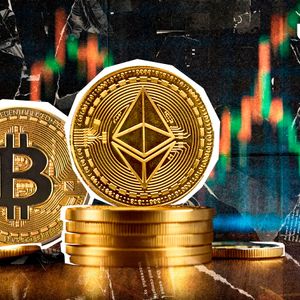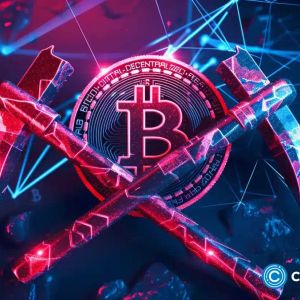Summary Active addresses, transaction volume, and gas consumption on the SUI network are key indicators of future price increases, showing strong correlations with asset appreciation. Significant growth in active addresses and transactions, especially in Payments and Gaming categories, has positively impacted SUI's price since July 2024. Hold SUI if already invested due to its strong growth potential; new investors should consider market conditions and portfolio diversification before buying. Introduction SUI (SUI-USD) is a Layer 1 blockchain developed by Mysten Labs that distinguishes itself by combining an object-oriented data model, a proprietary programming language ((MOVE)) and a highly parallelised consensus mechanism. Since its launch in May 2023, SUI has positioned itself as one of the most promising platforms for decentralised applications (dApps), DeFi and NFT, thanks to its emphasis on low latency and horizontal scalability. The native SUI token functions as fuel for transactions (gas), staking incentives and future governance. Its maximum supply is set at 10,000,000,000 token units. This token [SUI-USD] has earned a cumulative return up to its ATH of 254% (5.33 USD). The return as of today is 158%, reaching a current price of 3.89 USD per token. In this article, we will explore the impact that activity on the SUI chain has had on the price by examining three factors, namely daily transactions, active addresses on the chain and the gas consumed by the applications running on the chain. As can be seen in the graph, the profitability of SUI since its launch is quite large. We will try to dig deeper into the different metrics to see if they serve as leading indicators when it comes to discovering future price increases. TradingView Analysis Application Activity - Addresses As mentioned above, we will first focus on the historical evolution of the active addresses in the SUI network. Below, we can see two graphs. The first graph shows the active addresses, categorised by the type of application in which they run or interact. Each bar corresponds to one week of data, since the start of the network. As can be seen in the image until July 2024, an increase in addresses does not correspond to an increase in price, rather the opposite. After that date, the trend changes when active addresses start to be created in the Payments or Gaming category, which leads us to believe that the protocols of these categories, reflected in these addresses, have helped the appreciation of the asset from that point onwards. In fact, if one analyses the correlation (Spearman) between the variables, until July 2024 the correlation is practically zero (0.01) and from July 2024 onwards it rises to 0.65. Node Analytica In the following graph, the same concept is represented as in the previous graph, but in a different way and with a variation. We include the green and red bars as increases in the active address data of more than 20% in monthly seasonality. It can be seen that these increases are preceded by price increases at a later date, except for the increase in the period between 01/05/2024 - 01/06/2024, which corresponds to the creation of automatic portfolios to deposit tokens in the vesting period. Node Analytica Application Activity - Transactions Secondly, we analyse the historical evolution of transactions on the network and their impact on the price. As mentioned in the previous section, the data are still weekly, divided into categories of applications running on the network. The following graph shows that increases in transactions produce price increases in subsequent periods. This is the case for the notable increases in the number of transactions in the periods July 2023, June 2024 and October 2024. We see a delay in the price increase of about 4 months on average. Node Analytica In this second graph, the green and red bars signify increases or decreases in transactions of 15% accumulated over 30 days. The spearman correlation that this variable has with the asset is 0.5. This means that part of its variability can explain future price movements. Node Analytica Application Activity - Gas Used ((USD)) Finally, and to conclude this analysis, we look at the most important variable, which is the amount of gas consumed by the network broken down by application. We consider it the most important because it is the one that provides revenue to the network protocol itself. As we represent it in USD, it is directly influenced by the ups and downs of the asset price. In the first graph, we represent the gas generated by the different categories of applications. We see large gas peaks in categories such as Bridge, DeFi or Wallet to Wallet. Generally, these first two are the ones that bring more value to the protocol, since 'wallet to wallet' are considered mostly as spurious transactionality due to the fact that they do not interact with any protocol initially. As in the previous variables, it can be seen that a growth in the Gas used in the network causes future price increases (spearman correlation: 0.7). At this point, we recommend not to give too much importance to the gas consumed by the wallet to wallet. Node Analytica It can be seen how the green bars reflect increases greater than or equal to 30% at the monthly level, which are considerably large to see an effect on the price later on. We omitted the case of July 2023 as the protocol had just come to market and some tokens were sold which caused a drop in price and a negative correlation in that period. Node Analytica Conclusion The SUI network generates revenue through gas fees, especially in applications such as Bridges, DeFi, and Wallet-to-Wallet transfers. Currently, the network has a significant correlation between gas consumed and future price movements (Spearman: 0.7). Comparatively, platforms such as Solana generate similar revenues through gas, but with lower transactional efficiency and lower transaction per second (TPS) capacity. While Bitcoin generates revenue predominantly from base layer transaction fees, SUI, like Solana, has more varied and complex dApps and DeFi protocols that potentially increase its revenue streams. Key users and protocols in SUI include projects in the Payments, Gaming, Bridge and DeFi categories, all of which have shown significant increases in activity as of July 2024. Relevant platforms such as Artemis and Token Terminal allow detailed tracking of SUI usage in these applications. For these types of assets, we always use the same analysis methodology, as I believe it is the most optimal to see the real value being developed within these types of networks. As a final conclusion, if you already have the asset, do not sell it, keep it in your portfolio, as this network has a lot to say in the future. Its growth in terms of transactions and users is key, and it has a good competitive advantage over its competitors, which is its TPS (transactions per second) capacity. If you are thinking of buying the asset and are averse to short-term volatility, don't do it. Wait for a bear market in crypto and then buy it. If you can withstand short-term volatility, I think SUI is a reasonably good investment, as long as your portfolio and especially your crypto portfolio is well diversified. If SUI continues to increase its activities related to staking and Bitcoin-backed loans (BTCfi), this will strengthen its fundamental value. Currently, approximately 20% of the circulating supply (538 million tokens out of a total circulating supply of 3.33 billion) is locked up in staking activities, providing liquidity and stability to the network, as well as generating additional revenue through interest and associated fees. Finally, it is important to consider risks inherent to investing in SUI, such as the high volatility characteristic of this market and direct competition from other established Layer-1 platforms such as Ethereum and Solana. In addition, the initial reliance on certain key applications may imply a concentration risk that negatively affects the price if these protocols suffer from technical or adoption problems. However, this dependency has already decreased significantly since their launch in 2023.

















